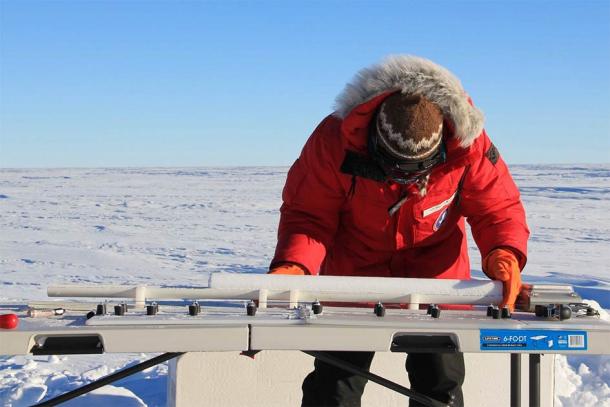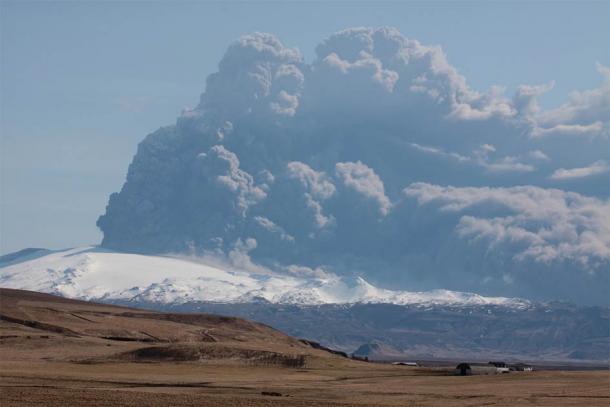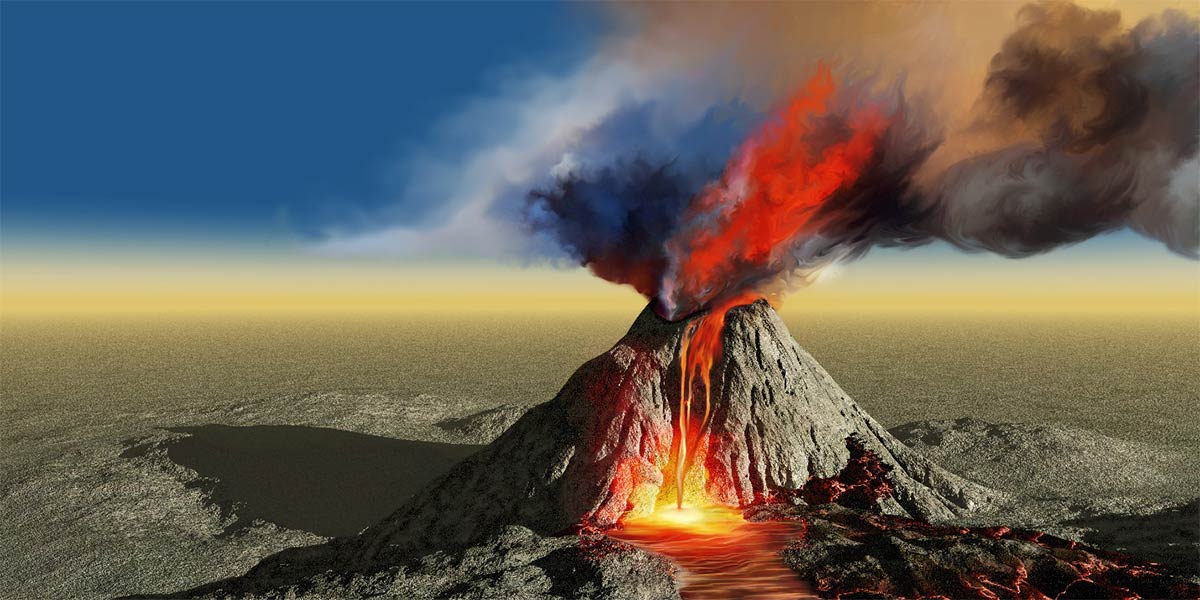A new scientific study of an ice core sample from Greenland has demonstrated how the Central-American Ilopango mega-eruption wiped out an entire Maya area, 1,590 years ago. Oxford University archaeologist and lead author of the new research paper, Dr Victoria Smith, told Ars Technica that her radiocarbon analysis confirmed El Salvador’s Ilopango mega-eruption occurred in 431 AD. She said the resulting ejection was “50 times bigger” than the May 18, 1980, Mount Saint Helens mega-eruption in southwestern Washington, USA, which was one of the greatest volcanic explosions ever recorded in the Americas.
The Ilopango Mega-eruption Cooled The Entire Planet
Today, Lake Ilopango is a crater lake situated about six miles (10 km) from modern-day San Salvador. The volcanic crater belongs to El Salvador’s volcanic arc of 20 active volcanoes, representing one of the most seismically active regions in Central America.
A 2019 paper featured in Science Magazine said the Ilopango mega-eruption caused an “18-month period of global cooling around 536 AD, marked by cloudy skies, crop failures and famines as far away as China.”
 Working with ice cores like the ones from Greenland used to date the Ilopango mega-eruption and the global cooling it caused in 431 AD. (NASA ICE / CC BY 2.0 )
Working with ice cores like the ones from Greenland used to date the Ilopango mega-eruption and the global cooling it caused in 431 AD. (NASA ICE / CC BY 2.0 )
–
However, Dr Smith’s new research established that this catastrophic eruption occurred more than a century earlier than previously thought. The Ilopango mega-eruption was successfully dated after ice core samples from Greenland were compared with samples of charred mahogany trees discovered in ash deposits around the volcano. This enabled the team of archaeologists to date the massive Ilopango volcanic explosion to the year 431 AD. Using 3D modelling, the researchers were able to estimate that the Ilopango mega-eruption plume rose some “28 miles into the upper atmosphere and that air currents carried it as far as Antarctica, more than 4,300 miles away.”
The Gods Must Have Been Furious That Day In 431 AD
Millions of tons of white ash from the Ilopango mega-eruption spread across more than 770,000 square miles (200 million hectares) of Central America. The event was called the “Tierra Blanca Joven,” Spanish for “young white earth.” The eruption was so destructive that it would have darkened the entire region for at least a week. And if this weren’t enough for one Armageddon-like event, the Ilopango explosion also caused a series of climatic events that led to a “strange 18-month era of global cooling,” according to the latest paper.
 The volcanic plume of the 2010 Hvolsvöllur volcanic eruption in Iceland. The Ilopango mega-eruption plume would have been many, many times bigger: extending 28 miles into the upper atmosphere. It was big enough to cool the planet for nearly 18 months. (Boaworm / CC BY 3.0 )
The volcanic plume of the 2010 Hvolsvöllur volcanic eruption in Iceland. The Ilopango mega-eruption plume would have been many, many times bigger: extending 28 miles into the upper atmosphere. It was big enough to cool the planet for nearly 18 months. (Boaworm / CC BY 3.0 )
–
A report in the Daily Mail gives a graphic description of the days leading up to the Ilopango mega-eruption that immediately destroyed every living thing within 25 miles (40 km) of the blast, and rendered an area twice that size uninhabitable for more than a century. The rising lava lake within the mountain would have created bizarre sounds across the immediate environment, and the pitch of these sounds would have increased with rising pressure as the magma channeled up the mountain to the surface.
Then, as the magma neared the surface of the mountain vent in the hours before the eruption, a series of tremors and earthquakes would coincide with a pressure decrease in the volcano causing sulfur dioxide and a host of other toxic gases to escape. And then, as if the gods themselves were at work, the local Mayas would have witnessed the mountain changing shape as it swelled, cracked and sunk, as magma collapsed the mountain’s internal geological fault lines.
The Ilopango Mega-eruption: A Rare Paradigm-changing Event
The researchers involved in the latest study, examined numerous major mega-eruptions, and concluded that the Ilopango seismic event´s “volume of its pyroclastic flows,” which are fast-moving currents of gas, volcanic ash and pumice, were “ten times that of Mt. Vesuvius when it buried Pompeii,” and that it killed every living thing within 25 miles and rendered an area twice that size uninhabitable for a century-and-a-half.
–
- Discovered: The Highland Volcano That Collapsed Ancient Rome
- Ice-Core Study Finds Evidence of Ancient European Plagues, Wars, and Imperial Expansion
- Inaccuracies Found in Radiocarbon Dating Calibrations Could Change Historical Timelines
The Ilopango mega-eruption was undoubtedly one of the most violent earth-shattering events in Maya history. You would imagine such a catastrophe would have destroyed all of Maya civilization, but, luckily, the Mayas had by that time spread across southern México, Guatemala, and northern Belize.
However, what did affect global civilization at that time, was Dr Smith´s observation that Ilopango mega-eruption “probably lowered summer temperatures for a few years in the Southern Hemisphere, which would have required an entire overhaul of agricultural drainage and watering systems, which lay at the pulsing heart of this indigenous society.”
–
By Ashley Cowie









